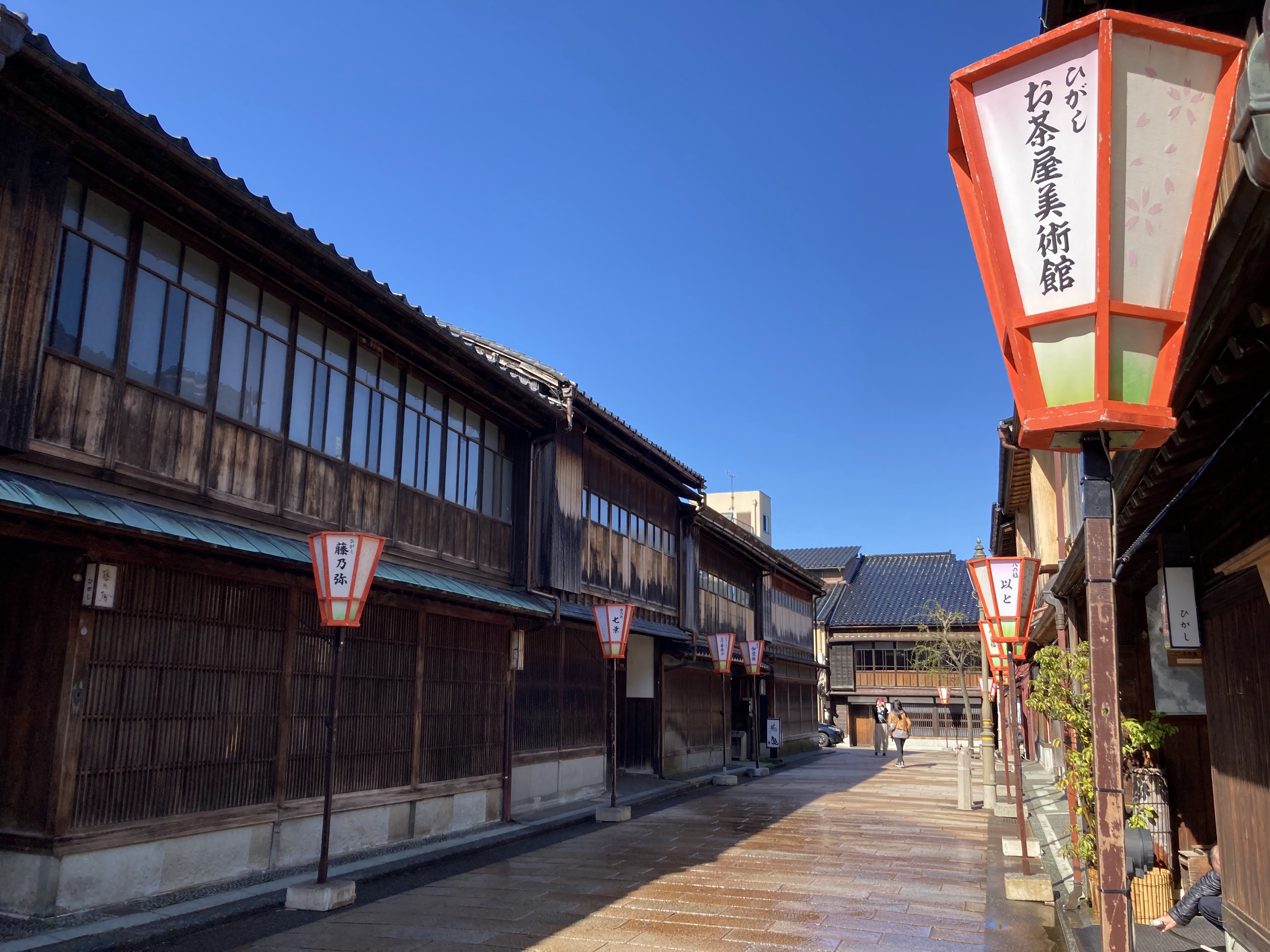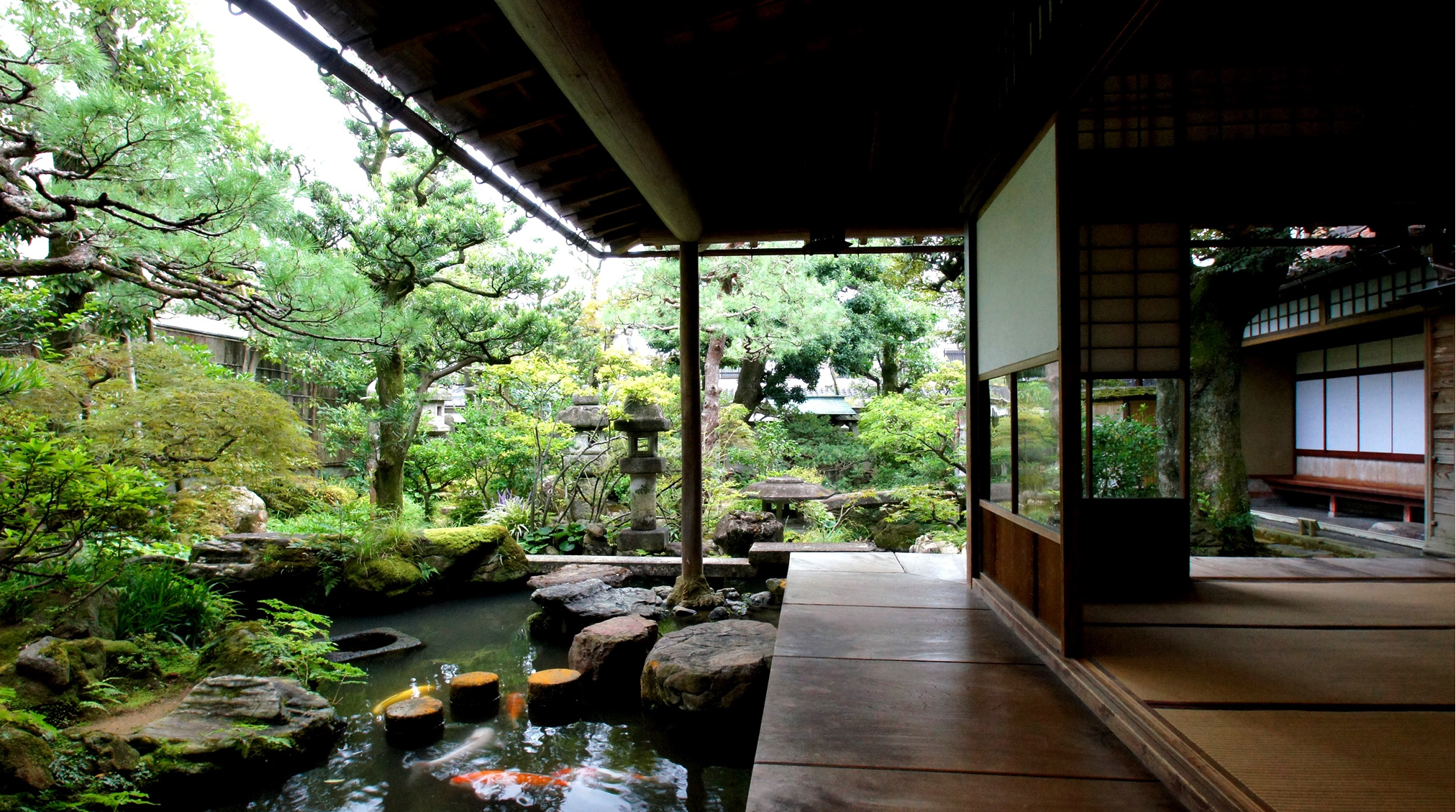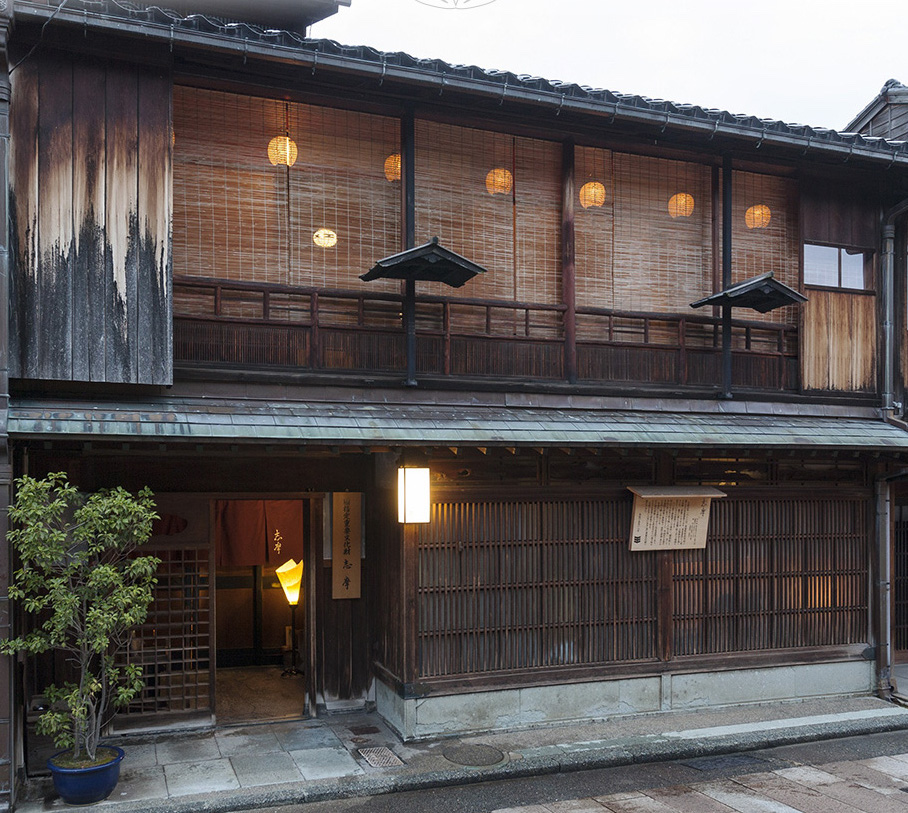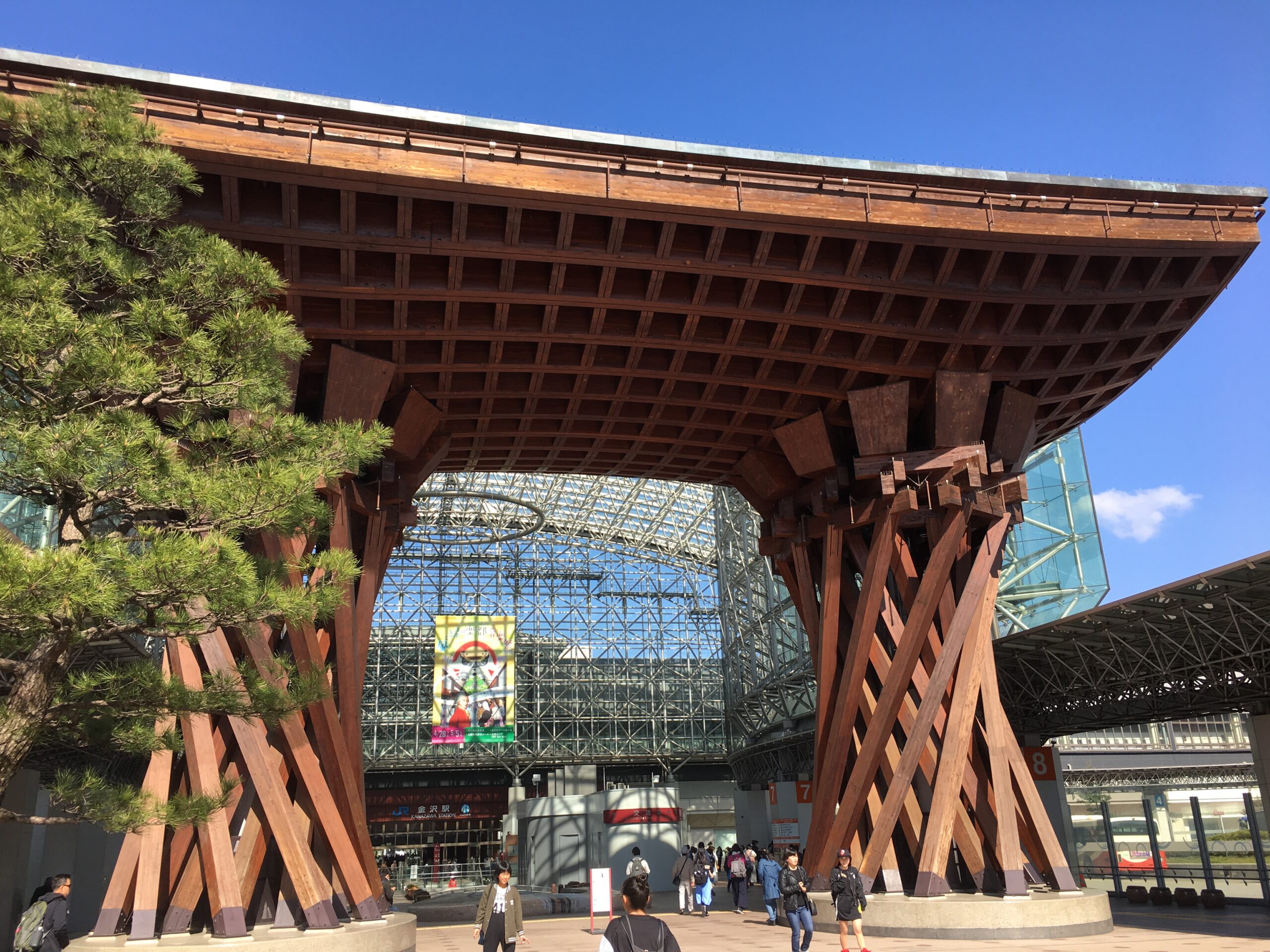Kenroku-en Garden | 6 elements to know ahead of time
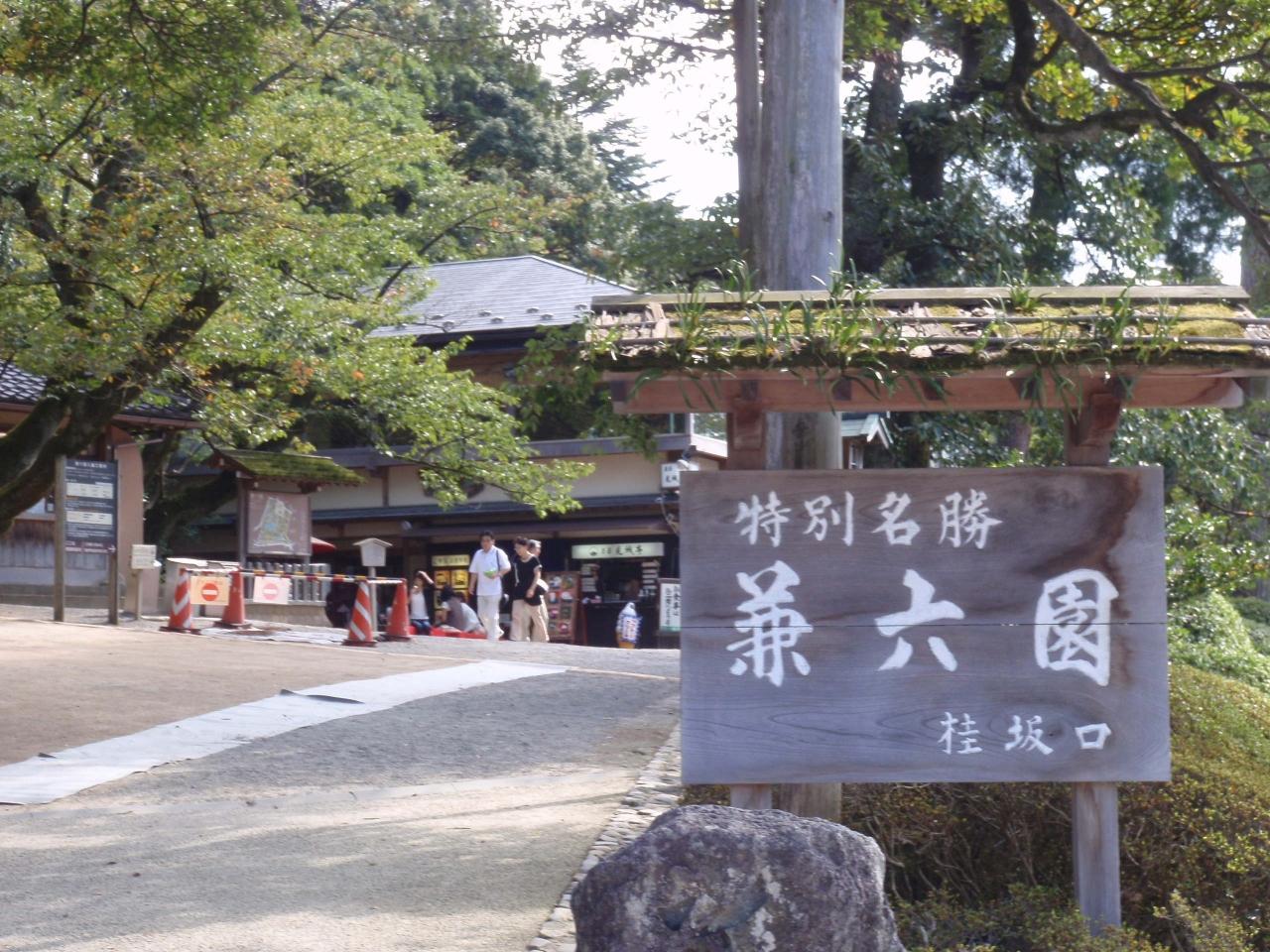
Kanazawa’s Kenroku-en Garden is one of the 3 celebrated garden in Japan.
The area is as huge as 11hectare(114,436 square meters). It is not only a huge garden but also has many features.
The name, Kenroku-en, came from the old Chinese word rokusho (六勝)which appeared in a old Chinese writing of Song(宋)Dynasty.
It refers to “six beautiful elements” in English. It is also fun to think about what are six elements in Kenroku-en Garden.
General information about Kenroku-en Garden
Below is shown the general information about Kenroku-en Garden
| Developed in | 1620 |
| Location | Kanazawa, Ishikawa pref. |
| Garden area | 25 acres (114,436 m2) |
| Created by | Maeda clan |
| Annual visitors | 2,600,000 |
What are the 6 contradictory elements in Kenroku-en garden?
The six elements here are Spaciousness(宏大), Waterflow(水泉), Prospect(眺望), Antiquity(蒼古), Tranquility(幽邃), Artificiality(人力).
Kenroku-en Garden indeed contains six elements mentioned above and that’s the reason it was allowed to be called “Kenroku-en”
Moreover, according to the Chinese old writing, each of those elements cannot co-exist in one single garden.
Spacious (霞ヶ池) vs Tranquility (翠滝)
A spacious garden is open and lively. But It cannot give us the profound impression.

A secluded garden should be quiet and narrow to express tranquility and profoundity.
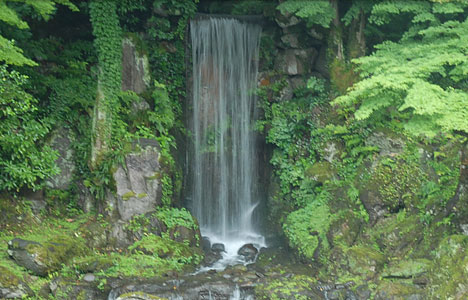
However, you may find both spacious and secluded areas in Kenroku-en Garden.
Prospect(眺望台)vs Beauty of Water
In a prospective area, you may see the sky and huge plain with many buildings. But it is difficult to find the beauty of water in such an area.
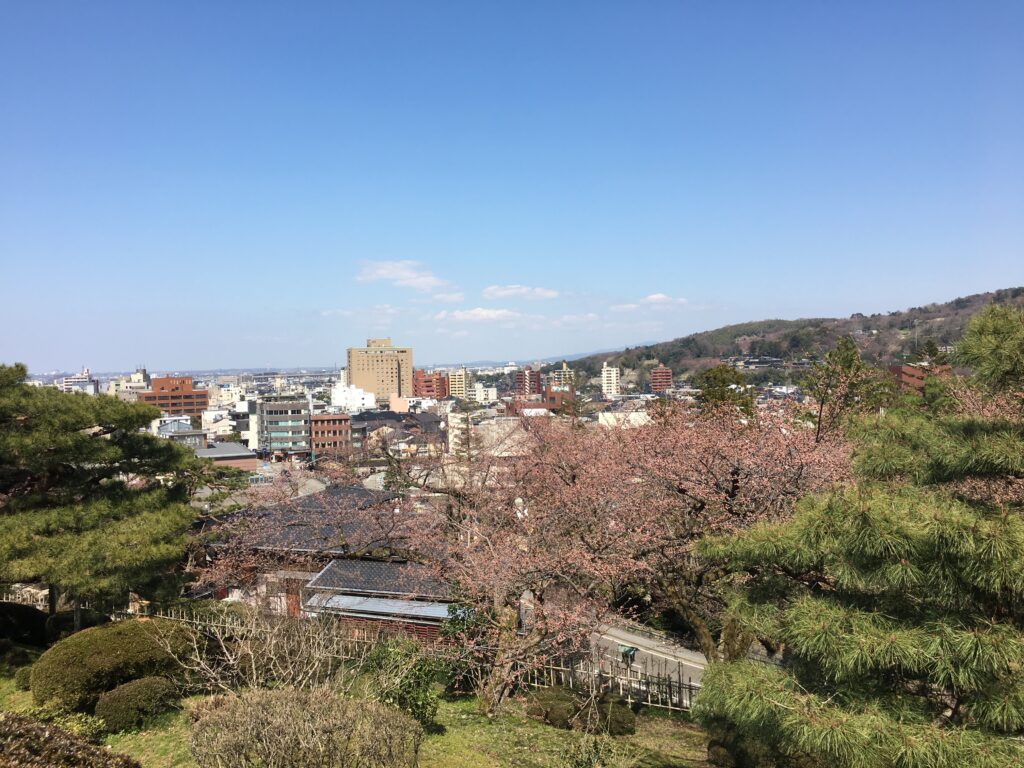
You may find the beauty of water in the area between trees or a valley which are far from a prospective area.
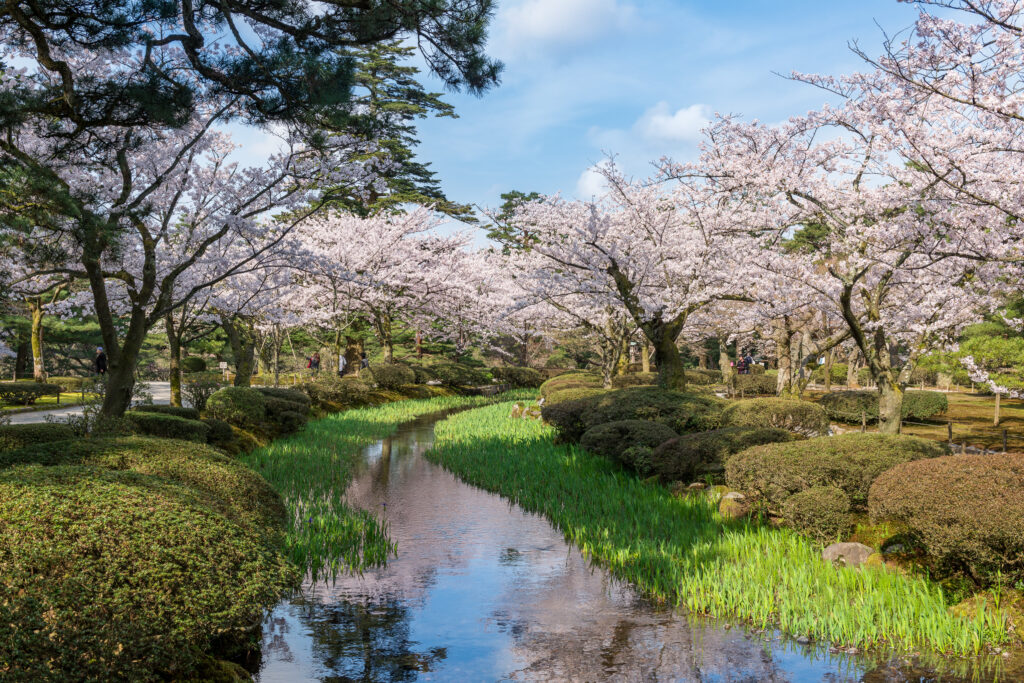
However in Kenroku-en garden,
You may see beautiful streams beside an observatory terrace.
Artificiality vs Antiquity(栄螺山)
A human can work on a garden to make it look more beautiful. As a result, however, it will lose the original charm of nature.
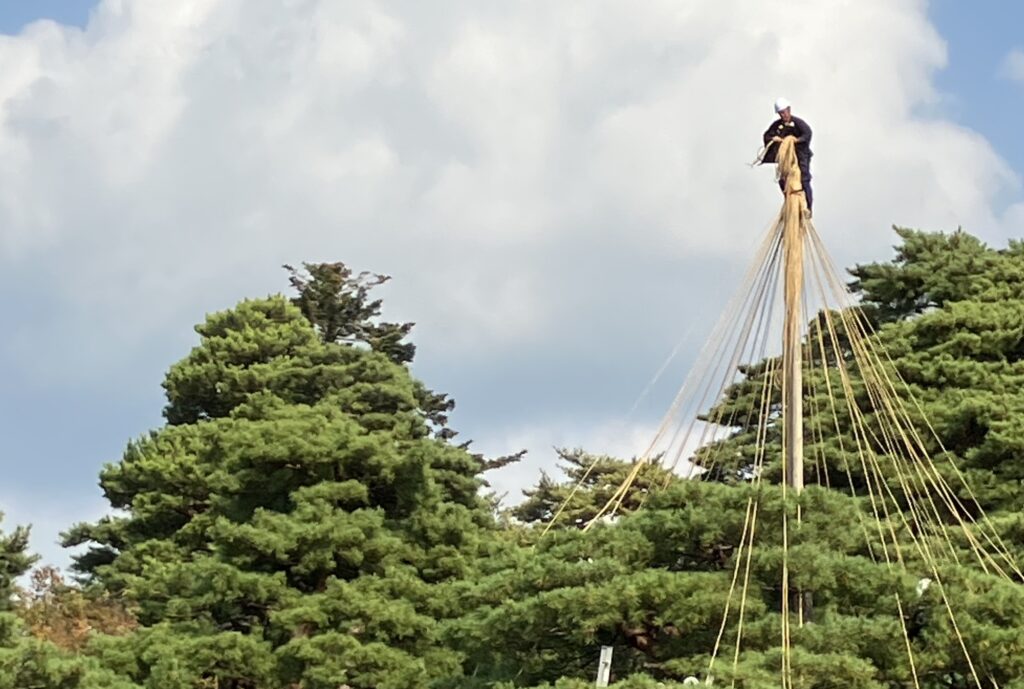
You may find the notion of “sabi (aging beauty)” only in the areas which are not under controll of human.
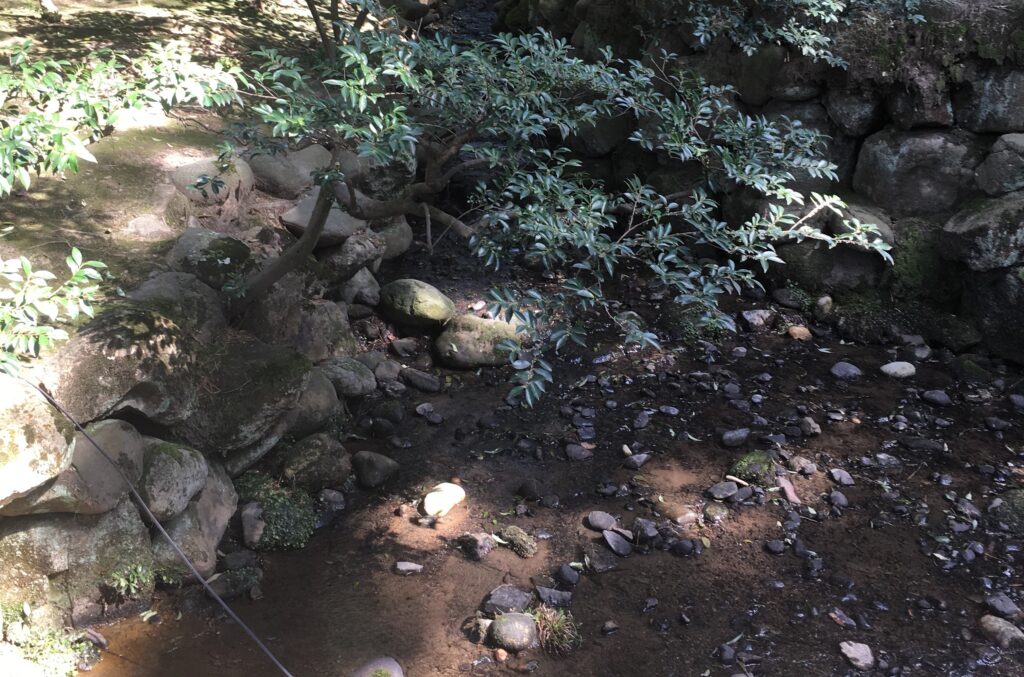
Although Kenroku-en Garden has been developed and maintained by men, it still has the original charm of nature, which you may find here and there in Kenroku-en Garden
What to see in Kenroku-en Garden
Kenroku-en Garden has various features that cannot be seen in any other gardens in Japan.
Kotoji-toro & Kasumiga-ike pond
This is the most photogenic point in the garden. The pond is characterized by an uniquely shaped lantern called Kotoji-toro. Kotoji refers to a column of Japanese harp or koto which functions as a movable bridge changing intervals and support its strings.
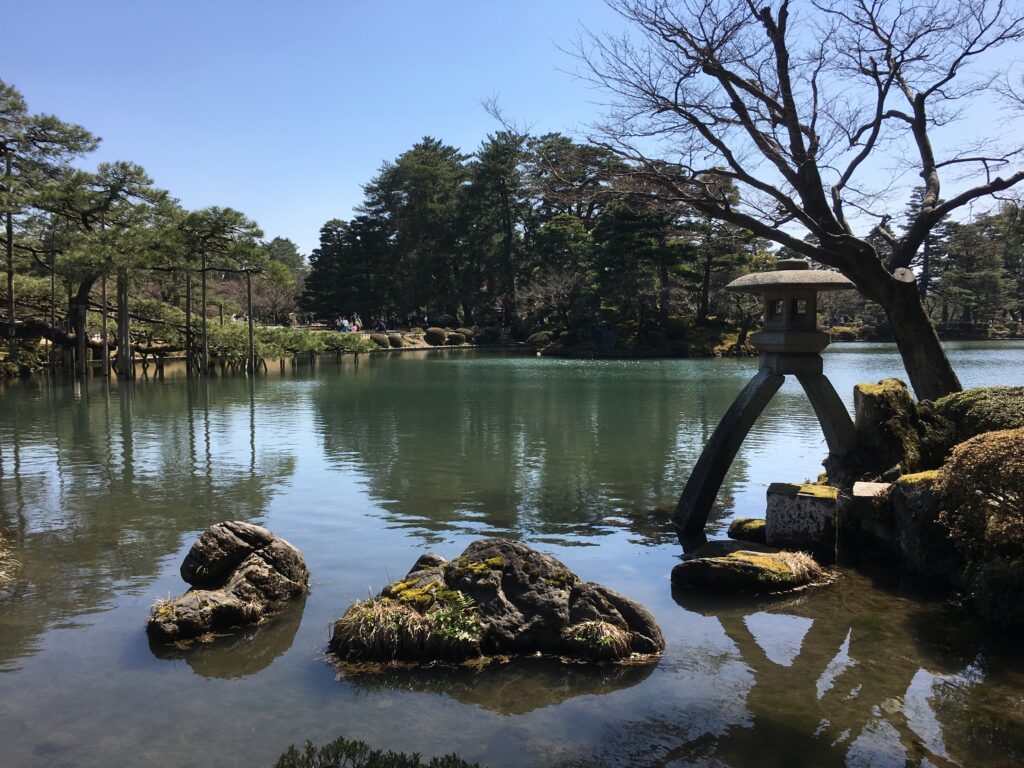
Horai-jima island
It is a turtle-like island floating on Kasumiga-ike pond. The island represents immortality and many people believe an old unworldly man resides on the island.

Karasaki-matsu pine & yukitsuri
Karasaki-matsu is the most eye-catching pine tree in Kenroku-en, which was imported from Ohmi domain by Maeda Nariyasu (the 12th lord of Kaga domain).
The shape of the pine tree looks like a crane.
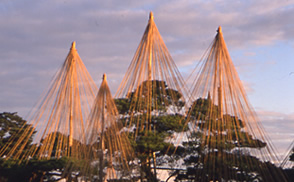
In winter, such important trees as Karasaki-matsu are usually to be maintained with yukitsuri, which is a way to protect the trees from the weight of snow.
All trees in Kenroku-en are barriered with ropes to prevent the heavy snowfall from breaking their branches. The corn-shaped trees covered with ropes gives really nice atmosphere of winter.
In Japan, turtles and cranes are believed to live more than 1,000 years. Therefore, they are the symbol of longevity.
The hill of seven deities of luck
There are a lantern and rocks on the hill.
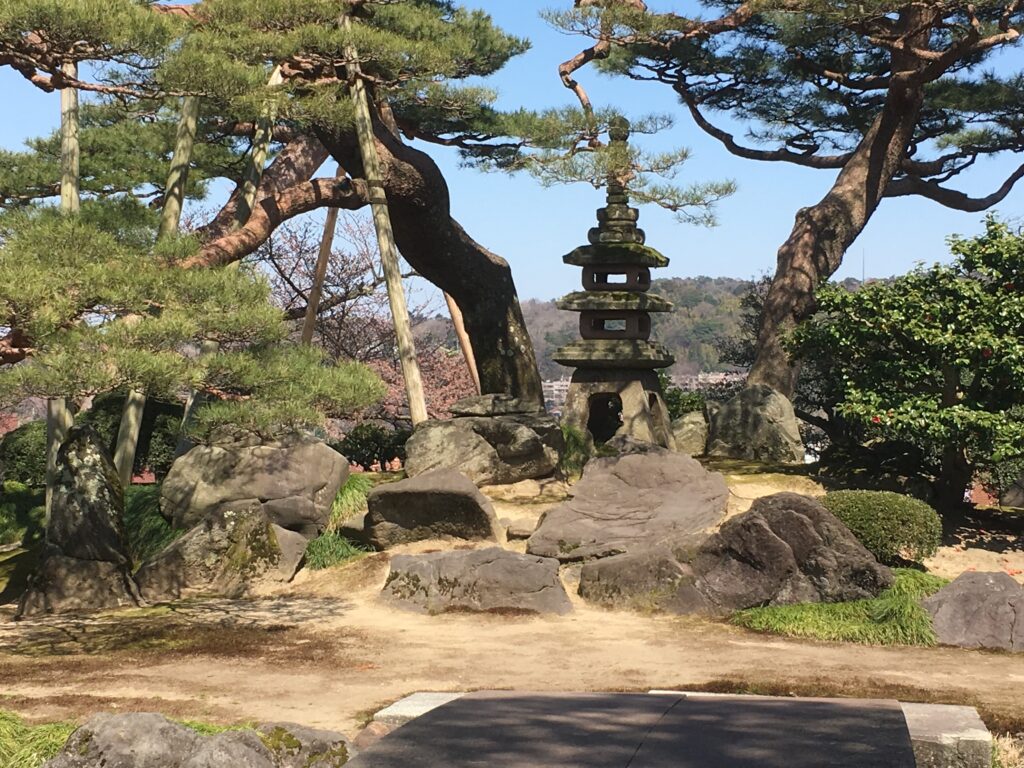
The lantern stands for Bishamon-ten, who is a deity of war from India and the surrounding rocks were compared to the other deities from China and Japan. Although it is difficult to tell which is which, it is believed that if you touch one of them, you will be blessed with each sort of fortunes by touching them.
Meiji-kinen monument
This is a statue of the Japanese legendary hero known as Yamato-takeru.
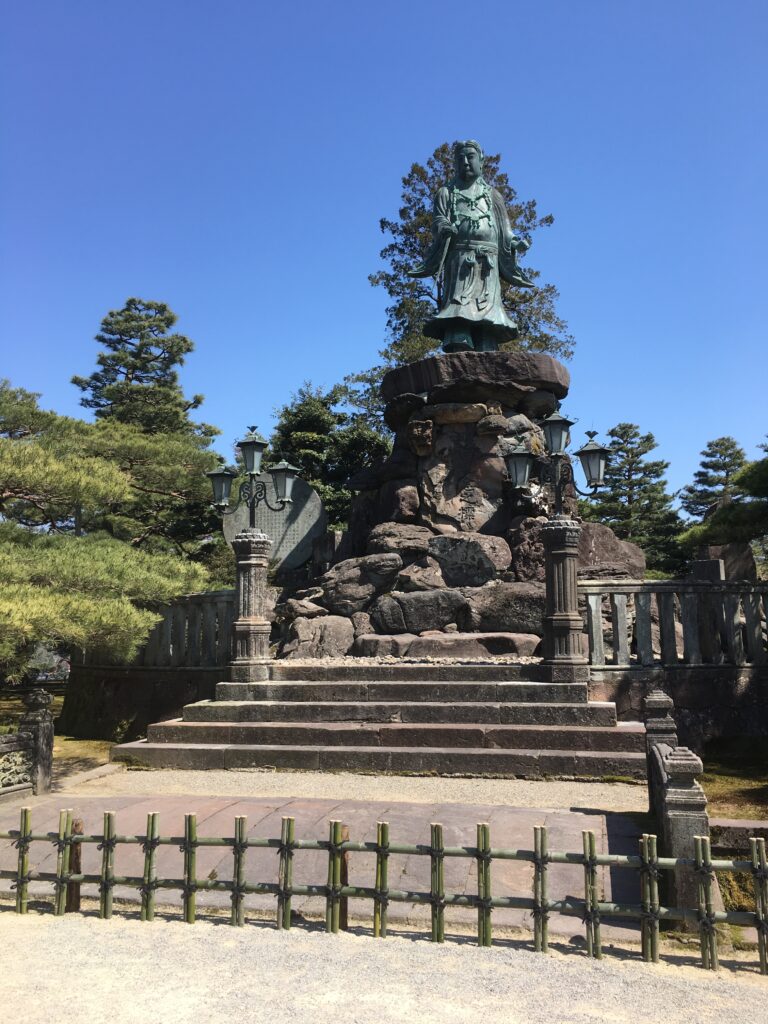
Although he failed to inherit the throne, he played an important role in the eastern expedition in the Japanese myth.
Actually Yamato-takeru is considered as a hero in southern part of Japan. The lord maeda built this statue to show his loyalty to Tokugawa shougnate (the central government).
Tatsumi water gate
All the streams in the garden flow from this gate. In the early Edo period, Maeda Toshitsune (the 3rd lord) built the gate. Although he ostensively claimed to have built it for the fire protection, he actually had a purpose to fill all moat with the water to enhance the protection of the castle.
Neagari-matsu pine tree
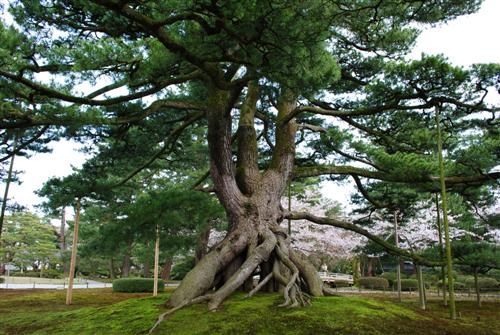
Neagari-matsu is a pine tree Maeda Nariyasu (13th lord) planted with piled soil. In later years when the tree grew up, he intentionally got rid of the soil to make the tree look greater. Neagari litterally means “lifted roots”. It is also a homonym which stands for raised value of money. Therefore, many visitors want to touch it to get financially blessed.
Midori-daki fall
This is the area where you may feel tranquility.

There is a rock below the fall. The waterfall makes the loud sound by hitting the rock so that the visitors can hear it from a distant place.
Although the fall was artificially drawn from Tatsumi water gate, the premitive atmosphere still remains around this area.
Hisago-ike pond
This is the starting point where Maeda Tsunanori (5th lord) began to build Kenroku-en garden and Shigure-tei restaurant.
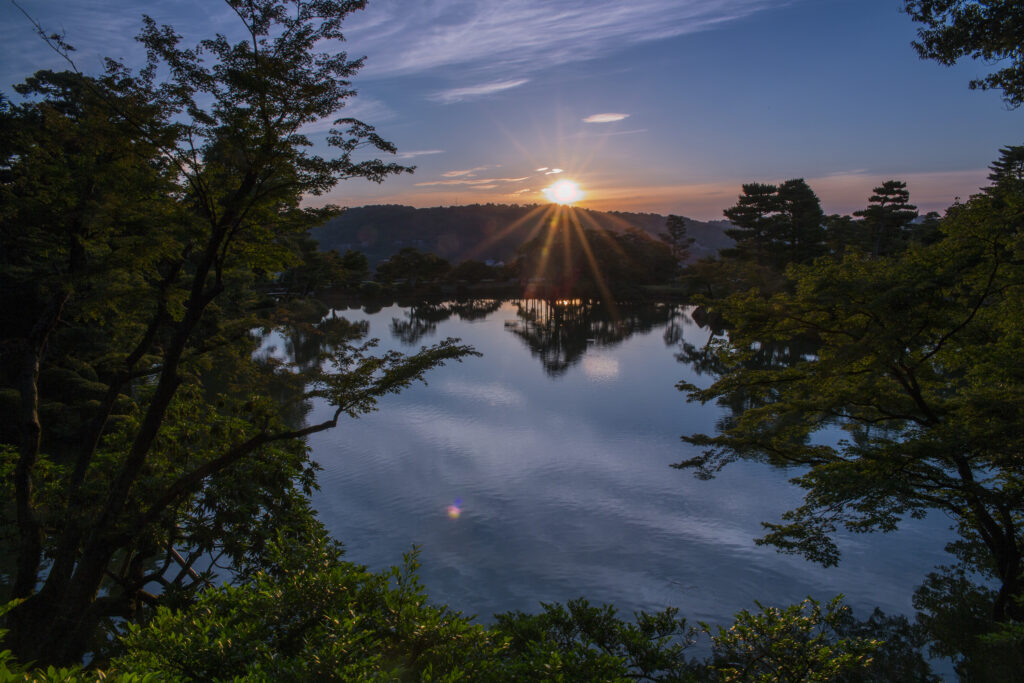
Hisago-ike is named after gourd because the shape of the pond looks like that. It is so photogenic that the visitors commonly take photos with their companies sitting on a bench on Uki-jima island by crossing Higurashi bridge and ishi-bashi bridge.
Fountain
Fountain’s water blow up from the pond without using the electoric power.

Based on Siphon Principle, the water is drawn from Kasumiga-ike pond which is located at higher elevation and that allows it to blow up naturally.
My tour ends here. I have introduced the charm of Kenroku-en garden.
How do you like it?
Until next time!

